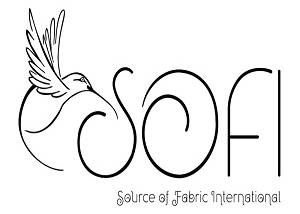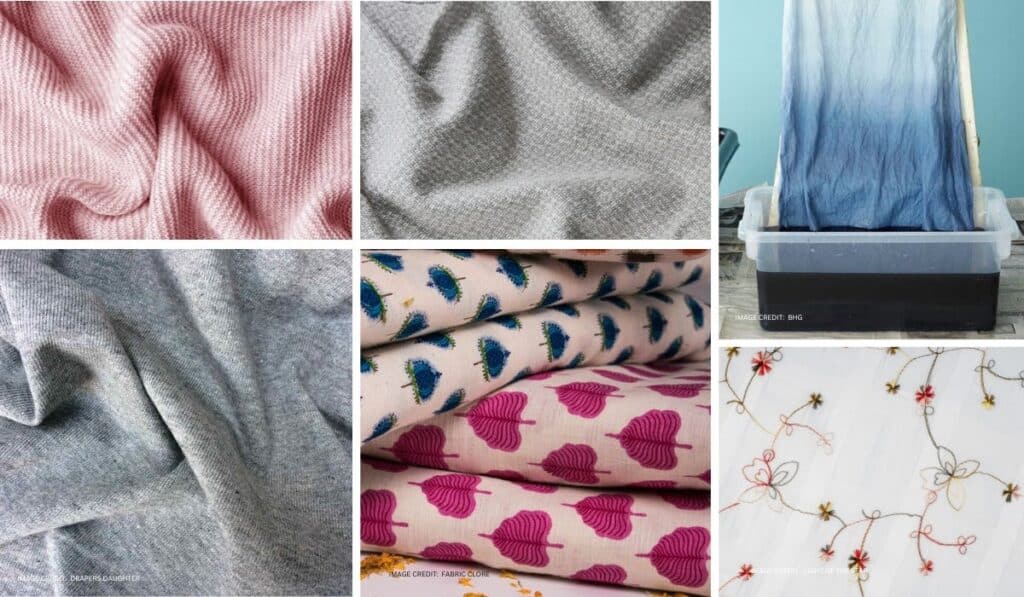In the competitive world of textiles, developing a strong fabric buying strategy is crucial for ensuring quality, cost-efficiency, and sustainability. Whether you’re a small business owner or a large manufacturer, a well-thought-out approach can significantly impact your bottom line. This guide from SOFI will help you navigate the complexities of fabric procurement with expert tips and actionable advice.
Understanding Your Needs and Budget
Before diving into the fabric market, it’s essential to have a clear understanding of your specific needs and budget. This foundational step helps streamline the buying process and ensures that you make informed decisions.
Assess Your Fabric Requirements
Determine the types of fabrics that best suit your product line. Take durability, texture, weight, and color into consideration. This will help you avoid impulse purchases and focus on materials that align with your brand’s standards.
Set a Realistic Budget
Having a clear budget in place prevents overspending and allows for better financial planning. Break down your budget to accommodate various fabric needs, including luxury materials for premium products and more affordable options for everyday items.
Research and Source Reliable Suppliers
Choosing reliable suppliers is essential to having a successful fabric purchasing plan. Reliable suppliers ensure consistent quality and timely deliveries, which are critical for maintaining production schedules.
Conduct Market Research
Start by researching potential suppliers online. Check out other companies’ ratings, reviews, and testimonies. Websites like Alibaba and TradeKey can provide a wealth of information on international suppliers.
Visit Trade Shows and Fabric Markets
Trade shows and fabric markets are excellent venues for discovering new suppliers and seeing fabrics in person. Building relationships with suppliers at these events can lead to better deals and more personalized service.
Evaluate Fabric Quality
Quality assessment is crucial when developing a fabric buying strategy. Poor-quality fabrics can lead to product returns, customer dissatisfaction, and damage to your brand’s reputation.
Request Samples
Always request samples before making large purchases. Inspect the samples for consistency, colorfastness, and any signs of defects. This step helps you gauge the overall quality of the supplier’s products.
Perform Fabric Tests
Conduct tests to evaluate fabric performance. Verify the fabric’s strength, color bleeding, and shrinking. This will give you a clear understanding of how the fabric will behave in real-world conditions.
Negotiate Terms and Prices
Successful negotiating can strengthen your connection with suppliers and result in big financial savings.
Discuss Payment Terms
Achieve favorable conditions for payments that fit your cash flow through negotiation. You might have more financial management freedom with options like net 30 or net 60.
Bulk Purchase Discounts
Inquire about discounts for bulk purchases. Many suppliers offer lower prices for larger orders, which can be advantageous if you have adequate storage space and a steady demand for the fabric.
Stay Updated with Market Trends
Keeping up with the latest trends in the fabric industry ensures that your products remain relevant and appealing to customers.
Follow Industry News
Get copies of trade journals and follow influential people on social media. Staying informed about new fabric technologies and fashion trends can inspire innovative product designs.
Attend Workshops and Seminars
Take part in fashion and textile-related courses and lectures. These events are great for networking and gaining insights into upcoming market shifts.
Implement Sustainable Practices
Sustainability is becoming increasingly important in the fabric industry. Adopting eco-friendly practices can enhance your brand’s image and appeal to environmentally-conscious consumers.
Source Sustainable Fabrics
Look for suppliers that offer organic or recycled fabrics. These materials not only reduce environmental impact but also align with the growing consumer demand for sustainable products.
Reduce Waste
Implement measures to minimize fabric waste during production. Efficient pattern cutting and recycling fabric scraps can significantly reduce your environmental footprint.
Build Long-Term Supplier Relationships
Establishing strong, long-term relationships with your suppliers can lead to better service and exclusive deals.
Communicate Regularly
Maintain open lines of communication with your suppliers. Regular updates on your needs and feedback on their products can foster a more collaborative relationship.
Develop Trust
Trust is crucial in supplier relationships. Honor your commitments and pay on time to build a reputation as a reliable partner. Must Read: The History and Evolution of Denim Fabric
Conclusion
Developing a strong fabric buying strategy requires careful planning, research, and ongoing management. By understanding your needs, sourcing reliable suppliers, evaluating fabric quality, and staying updated with market trends, you can enhance your procurement process and achieve better outcomes for your business. At SOFI, we’re committed to helping you succeed with actionable advice and expert insights. By following these guidelines, you’ll be well-equipped to develop a robust fabric-buying strategy that supports your business goals and keeps you ahead in the competitive textile market.


